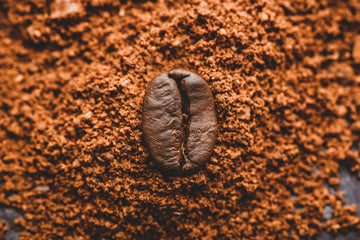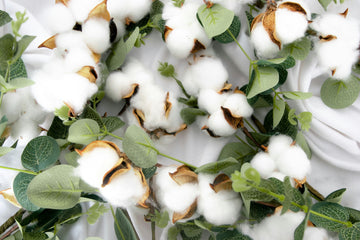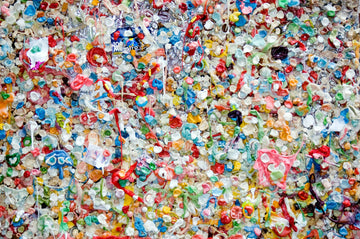In the world of eco-friendly materials, coffee grounds may seem like an unlikely hero. Yet, this common byproduct of our morning brew is emerging as a sustainable and versatile material with a range of applications. From furniture and construction materials to eco-friendly products and packaging, coffee grounds are proving that they have far more potential than simply ending up in the trash.
In this article, we'll explore how coffee grounds can be repurposed as an eco-material, their unique benefits, and how choosing products made from coffee grounds can help reduce waste and contribute to a more sustainable future.
What are Coffee Grounds?
Coffee grounds are the residue left behind after brewing coffee. They consist of the fibrous parts of the coffee bean that do not dissolve in water during the brewing process. Typically, coffee grounds are discarded as waste, ending up in landfills, where they release methane as they decompose—an unfortunate environmental consequence.
However, through innovative thinking, coffee grounds are being transformed into new products and materials that extend their lifecycle, preventing them from contributing to pollution and reducing reliance on virgin resources.
The Environmental Impact of Coffee Waste
Globally, coffee is one of the most consumed beverages, with over 2.25 billion cups brewed every day. This massive consumption generates millions of tons of used coffee grounds, most of which end up in landfills. The sheer volume of this waste represents a significant environmental issue, as decomposing organic material like coffee grounds releases methane—a potent greenhouse gas.
While coffee grounds can be composted, many people do not have access to composting facilities, and large-scale coffee consumption in offices and cafes produces far more waste than can be easily composted. That's where repurposing coffee grounds comes in, turning what would be waste into a valuable resource.
How Coffee Grounds Become an Eco Material
Transforming coffee grounds into an eco-material requires innovation. After the brewing process, used coffee grounds are collected, dried, and sometimes mixed with natural resins or polymers to create a durable material. This material can then be molded, pressed, or extruded into various products.
One key area where coffee grounds shine is their ability to reduce the need for new raw materials. Instead of extracting and processing virgin materials, manufacturers can rely on the vast supply of used coffee grounds. This not only minimizes waste but also reduces energy consumption and resource depletion.
Benefits of Using Coffee Grounds as an Eco Material
- Reducing Waste: By repurposing coffee grounds into products, companies can divert large amounts of organic waste from landfills, reducing methane emissions and overall waste.
- Resource Efficiency: Coffee grounds are an abundant and renewable resource, meaning that using them helps conserve virgin materials like wood, plastics, or metals.
- Lower Carbon Footprint: Manufacturing with coffee grounds typically requires less energy than processing traditional materials, contributing to lower carbon emissions.
- Biodegradability: Depending on how they are processed, many products made from coffee grounds are biodegradable or compostable, meaning they won’t sit in landfills for centuries like plastic.
- Aesthetics: Products made from coffee grounds often retain a natural, earthy appearance and scent, giving them a unique aesthetic appeal that’s linked to nature and sustainability.
Everyday Products Made from Coffee Grounds
Coffee grounds have found their way into a surprising number of products that blend sustainability with function and design. Here are some common applications:
1. Coffee Grounds in Tableware and Kitchen Accessories
One of the most popular uses for coffee grounds is in eco-friendly tableware, such as mugs, cups, and plates. Combined with plant-based resins, coffee grounds can be molded into sturdy, durable items that replace traditional plastic or ceramic.
Kitchen accessories, such as cutting boards or utensils, also benefit from coffee grounds’ durability and eco-friendliness. These items are biodegradable, meaning that once they’re worn out, they can return to the earth instead of contributing to plastic waste.
2. Sustainable Packaging
Sustainable packaging is another area where coffee grounds are making a significant impact. Eco-conscious brands are turning to coffee grounds to create packaging that is not only biodegradable but also gives a natural and organic feel to their products.
For industries like cosmetics or premium food products, packaging made from coffee grounds enhances the branding narrative, offering customers a sustainable, luxurious alternative to traditional packaging.
3. Fashion Accessories
Some fashion brands are now incorporating coffee grounds into accessories like sunglasses, wallets, and footwear. The fibers within coffee grounds provide structure and durability, making them suitable for creating hardwearing yet stylish items.
Beyond their eco-appeal, products made from coffee grounds often carry a subtle coffee scent, giving them an extra sensory dimension that appeals to coffee lovers and eco-conscious consumers alike.
4. Office Supplies
Office supplies made from coffee grounds—such as notebooks, pens, and even laptop cases—are growing in popularity. For companies focused on sustainability, providing employees with eco-friendly products like coffee-ground pens sends a powerful message about environmental responsibility.
These office supplies offer the same functionality as traditional materials, with the added benefit of helping to reduce waste and promote a green office culture.
5. Furniture and Construction
Coffee grounds are even finding their way into furniture design and construction materials. When mixed with resin or other eco-friendly binders, coffee grounds can be used to create lightweight, durable building materials that serve as sustainable alternatives to concrete or particleboard.
Furniture made from coffee grounds often retains a natural, organic look, adding an earthy aesthetic to interior spaces. As consumers and businesses alike prioritize sustainability in design, coffee-ground materials provide a stylish and eco-friendly solution.
Why Coffee Grounds Matter for Swag and Corporate Gifts
Choosing coffee grounds as a material for swag and corporate gifts is a powerful way to promote sustainability in your brand. Many businesses are transitioning to eco-friendly products as part of their corporate social responsibility efforts, and coffee grounds offer an innovative solution that resonates with modern values.
1. Branding with Purpose
Incorporating coffee-ground products into your branding allows you to tell a sustainability story that connects with customers and partners. Whether you're gifting eco-friendly notebooks, pens, or drinkware, you’re making a statement that aligns with eco-conscious consumers and businesses.
Choosing coffee grounds as a material sends a clear message that your company values reducing waste, conserving resources, and contributing to a circular economy.
2. Practical and Sustainable Corporate Gifts
Corporate gifts made from coffee grounds are practical, sustainable, and stylish. They combine functionality with a tangible commitment to environmental stewardship, offering recipients something they can use daily while serving as a constant reminder of your brand’s values.
For eco-conscious companies looking to give away branded merchandise or swag at events, trade shows, or conferences, coffee grounds represent a sustainable and innovative choice that stands out.
How Coffee Grounds Strengthen Sustainability in Daily Life
Using coffee-ground products in daily life helps reduce waste, conserve resources, and promote sustainability. Whether in your home, office, or personal life, integrating these products is an easy way to contribute to environmental responsibility.
1. Switching to Coffee-Ground Products
Consumers can make a significant difference by replacing conventional items with products made from coffee grounds. Whether it’s a coffee mug, a pair of sunglasses, or an eco-friendly notebook, every switch away from plastic or unsustainable materials helps reduce the demand for virgin resources and limits waste.
2. Closing the Loop on Waste
Coffee grounds embody the concept of a circular economy, where waste is minimized, and materials are continually repurposed. By choosing products made from coffee grounds, consumers help close the loop, turning what would have been waste into something functional and valuable.
3. Composting and Decomposition
Many coffee-ground products are compostable or biodegradable, meaning they break down naturally at the end of their life cycle. This is especially important in industries like packaging, where plastic waste has become a global problem. Compostable coffee-ground packaging can significantly reduce landfill waste and contribute to soil health when composted.
Coffee Grounds as a Step Towards a Sustainable Future
As the world increasingly shifts towards more sustainable practices, repurposing waste materials like coffee grounds represents a meaningful step forward. Whether used in tableware, fashion, office supplies, or even construction, coffee grounds offer an innovative solution to some of the world’s most pressing environmental challenges.
For businesses, adopting coffee-ground products demonstrates a commitment to sustainability, strengthening brand reputation and building trust with eco-conscious consumers. For individuals, integrating these products into daily life represents a tangible way to make a positive impact on the environment.
In the end, coffee grounds prove that even the simplest waste product can be transformed into something useful, beautiful, and sustainable, giving new meaning to our daily cup of coffee.





